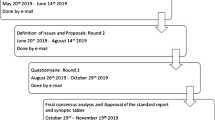Abstract
Purpose of Review
Positron emission tomography has not traditionally played a major role in the evaluation of hepatocellular carcinoma (HCC). Owing to high background liver uptake and molecular mechanisms within HCC lesions, uptake of 18F-fluorodeoxyglucose (FDG) is variable and prior studies have shown only modest overall detection of intrahepatic disease.
Recent Findings
Tracers such as 18F- and 11C-choline as well as 11C-acetate have been explored either in isolation or together with 18F-FDG have shown greater promise in detection of intrahepatic lesions, but yet are not in widespread clinical use. 68 Ga-Prostate specific membrane antigen is a tracer developed for use in prostate cancer but a pilot study and several case reports have indicated that there may be the potential for use in the evaluation of HCC.
Summary
Increased rates of lesion detection using 18F-FDG may be seen in poorly differentiated tumors and in the setting of metastatic disease or within recurrent tumor following loco-regional therapies and FDG uptake may indicate a greater risk of recurrence following transplantation. Further work will be required to elucidate the precise role of other non FDG tracers in the evaluation of patients at risk for or with HCC.




Similar content being viewed by others
References
Recently published papers of particular interest have been highlighted as: • Of importance •• Of major importance
Global Cancer Observatory. http://globocan.iarc.fr/Default.aspx (2018). Accessed 25 Jan 2019.
Makarova-Rusher OV, et al. Population attributable fractions of risk factors for hepatocellular carcinoma in the United States. Cancer. 2016;122(11):1757–65.
Heimbach JK, et al. AASLD guidelines for the treatment of hepatocellular carcinoma. Hepatology. 2018;67(1):358–80.
Galle PR, et al. EASL clinical practice guidelines: management of hepatocellular carcinoma. J Hepatol. 2018;69:182–236.
Kokudo N, et al. Evidence-based clinical practice guidelines for hepatocellular carcinoma: the Japan Society of Hepatology 2013 update (3rd JSH-HCC guidelines). Hepatol Res. 2015. https://doi.org/10.1111/hepr.12464.
Chernyak V, et al. Liver Imaging Reporting and Data System (LI-RADS) version 2018: imaging of hepatocellular carcinoma in at-risk patients. Radiology. 2018;289(3):816–30.
Wald C, et al. New OPTN/UNOS policy for liver transplant allocation: standardization of liver imaging, diagnosis, classification, and reporting of hepatocellular carcinoma. Oak Brook: Radiological Society of North America Inc.; 2013.
Trojan J, et al. Fluorine-18 FDG positron emission tomography for imaging of hepatocellular carcinoma. Am J Gastroenterol. 1999;94(11):3314–9.
Khan MA, et al. Positron emission tomography scanning in the evaluation of hepatocellular carcinoma. J Hepatol. 2000;32(5):792–7.
Wudel LJ Jr, et al. The role of [18F] fluorodeoxyglucose positron emission tomography imaging in the evaluation of hepatocellular carcinoma/discussion. Am Surg. 2003;69(2):117.
Lin W-Y, Tsai S-C, Hung G-U. Value of delayed 18F-FDG-PET imaging in the detection of hepatocellular carcinoma. Nucl Med Commun. 2005;26(4):315–21.
Torizuka T, et al. In vivo assessment of glucose metabolism in hepatocellular carcinoma with FDG-PET. J Nucl Med. 1995;36(10):1811.
Salem N, et al. Quantitative evaluation of 2-deoxy-2[F-18]fluoro-d-glucose-positron emission tomography imaging on the woodchuck model of hepatocellular carcinoma with histological correlation. Mol Imaging Biol. 2007;9(3):135–43.
Podo F. Tumour phospholipid metabolism. NMR Biomed. 1999;12(7):413–39.
Yamamoto Y, et al. Detection of hepatocellular carcinoma using 11C-choline PET: comparison with 18F-FDG PET. J Nucl Med. 2008;49(8):1245–8.
Talbot J-N, et al. Detection of hepatocellular carcinoma with PET/CT: a prospective comparison of 18F-fluorocholine and 18F-FDG in patients with cirrhosis or chronic liver disease. J Nucl Med. 2010;51(11):1699–706.
Kolthammer JA, et al. PET imaging of hepatocellular carcinoma with 18F-fluoroethylcholine and 11C-choline. Eur J Nucl Med Mol Imaging. 2011;38(7):1248–56.
Grassi I, et al. The clinical use of PET with 11C-acetate. Am J Nucl Med Mol Imaging. 2012;2(1):33.
Ho CL, Yu SC, Yeung DW. 11C-acetate PET imaging in hepatocellular carcinoma and other liver masses. J Nucl Med. 2003;44(2):213–21.
Park JW, et al. A prospective evaluation of 18F-FDG and 11C-acetate PET/CT for detection of primary and metastatic hepatocellular carcinoma. J Nucl Med. 2008;49(12):1912–21.
Rauscher I, et al. (68)Ga-PSMA ligand PET/CT in patients with prostate cancer: how we review and report. Cancer Imaging. 2016;16(1):14.
• Huang HL, Zhen Loh TJ, Hoe Chow PK. A case of well-differentiated hepatocellular carcinoma identified on gallium-68 prostate-specific membrane antigen positron emission tomography/computed tomography. World J Nucl Med. 2018;17(2):102–05. Case reports demonstrating focal 68 Ga-PSMA uptake in HCC.
• Sasikumar A, et al. 68 Ga-PSMA PET/CT imaging in primary hepatocellular carcinoma. Eur J Nucl Med Mol Imaging. 2016;43(4):795–96. Case reports demonstrating focal 68 Ga-PSMA uptake in HCC.
•• Kesler M, et al. (68)Ga-PSMA is a novel PET-CT tracer for imaging of hepatocellular carcinoma: a prospective pilot study. J Nucl Med 2018. Pilot study demonstrating high sensitivity for HCC using 68 Ga-PSMA.
Katyal S, et al. Extrahepatic metastases of hepatocellular carcinoma. Radiology. 2000;216(3):698–703.
Sugiyama M, et al. 18 F-FDG PET in the detection of extrahepatic metastases from hepatocellular carcinoma. J Gastroenterol. 2004;39(10):961–8.
Wu H-B, et al. F-18 FDG in conjunction with 11C-choline PET/CT in the diagnosis of hepatocellular carcinoma. Clin Nucl Med. 2011;36(12):1092–7.
Ho C-L, et al. Dual-tracer PET/CT imaging in evaluation of metastatic hepatocellular carcinoma. J Nucl Med. 2007;48(6):902.
Lopci E, et al. Diagnostic accuracy of 11 C-choline PET/CT in comparison with CT and/or MRI in patients with hepatocellular carcinoma. Eur J Nucl Med Mol Imaging. 2015;42(9):1399–407.
Paudyal B, et al. Early diagnosis of recurrent hepatocellular carcinoma with 18F-FDG PET after radiofrequency ablation therapy. Oncol Rep. 2007;18(6):1469–73.
Han A-R, et al. The clinical value of 18F-FDG PET/CT for investigating unexplained serum AFP elevation following interventional therapy for hepatocellular carcinom. Hepatogastroenterology. 2009;56(93):1111–6.
Lee JW, et al. Prediction of tumor recurrence by 18F-FDG PET in liver transplantation for hepatocellular carcinoma. J Nucl Med. 2009;50(5):682–7.
Yang SH, et al. The role of 18F-FDG-PET imaging for the selection of liver transplantation candidates among hepatocellular carcinoma patients. Liver Transpl. 2006;12(11):1655–60.
Lee SD, et al. 18F-FDG-PET/CT predicts early tumor recurrence in living donor liver transplantation for hepatocellular carcinoma. Transpl Int. 2013;26(1):50–60.
Author information
Authors and Affiliations
Corresponding author
Additional information
Publisher's Note
Springer Nature remains neutral with regard to jurisdictional claims in published maps and institutional affiliations.
This article is part of the Topical collection on Nuclear Medicine & PET/CT Imaging.




